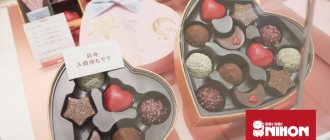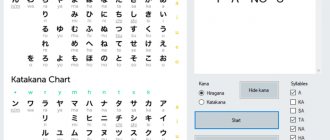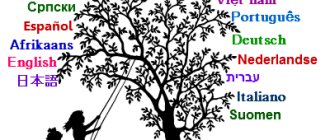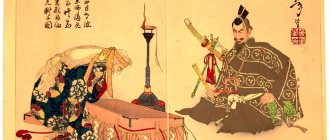If you've ever read manga or watched anime, you've probably heard people address others with -san, -chan, -sensei, or maybe -kun. These are Japanese nominal suffixes that have a similar meaning to "sir" or "ma'am" in English, but it's not quite that simple.
It is impossible to even single out a single rule for their use for everyone. This is an expression of politeness and an indication of the type of relationship between people. In Japan, politeness is very important even in everyday life, so it is very useful to know how to use these suffixes.
Basic nominal suffixes
-san -さん
This is probably the very first suffix you will learn to use. It can be used in conversation with anyone, regardless of the gender, age or social status of the interlocutor. This is the neutral suffix , which is most similar in meaning to “ Mr/Madam ” and is used most often. This suffix can also be added to the name of a business or store, such as a bakery (パン屋さん, pan-ya-san).
-chan -ちゃん
This is the most famous nominal suffix, which supposedly arose from the incorrect pronunciation of the suffix -san by children. This little mistake was considered cute and remained in the language. It is used when addressing young women with whom you are close, children , babies or even beloved animals . It can also be used when addressing a lover or when you are talking about someone you really like. Therefore, you need to be careful when using this suffix with people with whom you are not very close.
-kun -くん
This is a suffix used when addressing teenagers and young men. It is sometimes used when addressing young women, but only in very special circumstances. It is usually used by people who have a higher status in a conversation with a young person. The politeness level of this suffix is quite low, and the kanji is the same as that of kimi (君), which is an informal way of saying "you". It can be used when talking with a classmate or younger brother. Men use it when addressing women if they are quite close to them, just as women use it only in relation to men close to them.
-sama -さま
The suffix -sama is the most formal and special. This more polite version of the suffix -san is used in very specific situations when referring to people of higher status , such as when addressing customers in the service industry, or when referring to Japanese deities 神様 (kami-sama). It carries with it a sense of social superiority. In the Japanese industry, customer service is valued above all else, which is why we call it お客様 (o-kyaku-sama).
Sometimes this suffix is added to a word that refers to a group of people, as in the case of 皆様 (mina-sama), adding an additional level of politeness to a group of interlocutors. Finally, you will also find this suffix in some Japanese expressions, such as the widely used お疲れ様です (o-tsukare-sama-des), which is used to thank someone for their hard work.
Other nominal suffixes
There are many more Japanese nominal suffixes, some of the most common are -bucho (部長, department head), -kacho (課長, department head), -shacho (社長, company director) or -kaichou (会長, chairman), which refer to people who have received a special rank in the company ; and there are also nominal suffixes used primarily in a school context, such as sempai (先輩, senior comrade), kohai (後輩, junior comrade) or sensei (先生, teacher).
Read more: *Learn Japanese from manga: where to start? *Keigo is the official speech of the Japanese language *Learn Japanese online at Akamonkai Japanese Language School
Appeals related to the profession
The names of professions have two variants: for example, “translator” - honyakuka (翻訳家) or honyakusha (翻訳者). Names ending in ka (家 – “house”) indicate knowledge, competence in a given field (the particle ka has the approximate meaning of “expert”), and, according to the rules of modesty and moderation accepted in Japan, are never used by the speaker in relation to himself.
The simple form of the name of the profession (ending in xia, 者 - “person”) is used in relation to oneself and in writing.
Honorifics associated with professions, such as sensei, have simple analogues: kyoshi (教師) - teacher, isya (医者) or isi (医師) - doctor, bengoshi (弁護士) - lawyer.
Polite options are used when talking about a person, simple ones - about his profession.
Appeals to criminals and crime suspects
Previously, convicted criminals were addressed without any additional titles. Nowadays hikoku (被告, “accused”) is used.
For example, Matsumoto-hikoku - Aum Shinrikyo.
Defendants awaiting trial are referred to as yougisha (容疑者 – “suspect”).
Although these “titles” were introduced for the purposes of political correctness, over time they acquire an increasingly negative connotation. Thus, after Goryo Inagaki was arrested due to a traffic accident in 2001, some media outlets used the new title メンバ (memba), derived from the English word member, avoiding the use of iyogisha.
Company names
In addition, it is extremely important to indicate the type of company - publicly traded company (株式会社, kabushiki gaisha) is often shortened to one kanji 株 (kabu); private limited company (有限会社, yuugen gaisha), often shortened to the kanji 有 (yuu). The type of company is indicated in parentheses, before or after the name.
During business negotiations, hei-xia (弊社, literally “small, small, insignificant company”) is used to mean “our company”; instead of “your company” - ki-xia (貴社) in writing and he-xia (御社) in speech (both literally mean “respected, honored, glorious, honorable company”).
hei-xia and he-xia can be replaced by the more neutral tou-xia (当社, “this company”) or ji-xia (自社, “my company”).
For organizations providing professional services (for example, in industries such as law, accounting, accounting), xia is often replaced by jimusho (事務所, “office”).
Dono, tono
Dono and tono (both written 殿) roughly mean “lord” or “master.” They are no longer used in everyday communication, but are sometimes used in business correspondence, certificates, awards, and written invitations to tea ceremonies. The word dono originally referred to the residence of the aristocracy and its approximate meaning now is a representative of high society, an aristocrat. Dono is close in meaning to sama, but is less formal and often carries a connotation of affection and love for the interlocutor.
How to use nominal suffixes
If you're at all familiar with Japanese culture, you already know that the Japanese rarely use another person's first name, and therefore noun suffixes are often placed after the surname. Simply calling someone by their last name is considered very rude.
Sometimes a nominal suffix is used after a name for special reasons, such as when two people are especially close or when communicating with foreigners. Unlike the Japanese, we usually introduce ourselves by our first name rather than our last name, and the Japanese tend to respect this choice.
Respect is the key to understanding this complex communication system. In Japan hierarchy , based on criteria such as age or social status. Depending on your area of work or position, you may hold a higher, lower, or neutral position in relation to the other person.
All these factors are reflected in the way a person speaks, which creates a more formal language - keigo , which you can read more about here.
Nominal suffixes depend not only on a person's status, but also on other factors such as the person's level of trust, education, and gender. Even as a foreigner, it is important to follow these rules in order to feel welcome in this country.
Please note that noun suffixes should not be when :
- you are talking about yourself;
- when the other person asks you not to use them (呼び捨てyobisute);
- when you are talking to someone in your inner social circle (内 uchi), such as family, close friends
- when you talk about someone in your inner circle to someone in your outer circle (外 soto), for example if you talk to your boss about your best friend
Appeals in martial arts
Martial arts students often call their teachers senpai. The Senpai/Kouhai system is used in communication between junior and senior students.
Shougou (称号, “title, rank, degree”) is one of the systems of address in martial arts sections.
錬士, れんし (renshi): instructor; 教士, きょうし (kyōshi): high-level teacher; 範士, はんし (hanshi): eldest of teachers, “teacher of teachers”, “Great Master”; 名人, めいじん (meijin): title awarded by a special commission, “magnificent, brilliant person”;
Other requests
教師, きょうし (kyōshi): used to address the instructor outside the gym, in everyday speech instead of sensei; 親方, おやかた (oyakata): trainer (usually in sumo); 師範, しはん (shihan): head coach; 指導員, しどういん (shido:in): ordinary trainer; 師匠, ししょう (shisho): another appeal to martial arts teachers; 関 (“barrier, obstacle, obstacle”), ぜき (zeki): sumo wrestlers performing in the two highest weight categories (sekitori); 法師, ほうし (ho:shi): Buddhist monk;
Hongke
Honke (本家) - a very honorable address for the eldest son in the family, is now almost never used. Never used in relation to oneself, since such use is considered a sign of pride.
Euphonic suffixes
In informal communication, some Japanese come up with new suffixes, harmonious or forming certain combinations with the name, to express their attitude towards the interlocutor.
For example, nobaka (has both positive and negative connotations), bii (disdainful, mocking) and rin (friendly).
Tin and tan are incorrect pronunciations that are characteristic of children and are perceived as children's speech.
Tin is considered unattractive to the ear and is used (as a rule, to a younger interlocutor) in relation to unpleasant, socially dangerous, mentally unstable people, in order to only formally observe etiquette.
Tan (sometimes chan) is used among otaku with the names of popular anime, manga or video game characters, memetic cartoon girls, as well as all popularized inanimate objects, concepts, phenomena and consumer products.
Examples: OS-tan (drawn girls representing operating systems) and Bisuke-tan (biscuit).
Some of these characters are company mascots.
Tyama is a hybrid word made up of the parts chan and sama, used to refer to a younger interlocutor who deserves more respect than is due by age.
Source
Labels for everyone: types of Japanese women
Despite the fact that time does not stand still, traditional values and a system of dividing people according to certain criteria still prevail in Japan: from blood type and gender to lifestyle in general. For example, when it comes to women, the Japanese often use words such as himono-onna, minato-ku joshi, age-man. We will tell you how Japanese society divides women into different types, what these or those labels mean and where they came from.
In Japan you can hear conversations like this: “She’s really an age-man.”
, her husband got a promotion after they got married" or "This girl is such
a nikushoku joshi
, she doesn't care if the guy she fell in love with has a girlfriend.
She just sticks to him." Or even “I was a bari-kyaru
before I got pregnant.
Now I’m a juru-kari
and I earn less than before, but I’m glad that I made this decision because my family is happy!”
The list of similar words that characterize women in Japanese society can be endless. The Japanese love and tend to categorize others and themselves based on actions and behavior, as well as the lifestyle they lead.
The habit of dividing
This trend is most likely due to the importance of the principle of 和wa
harmony in Japanese society - a person must always not only belong to some group and correspond to it, but also be dependent and responsible to the members of this group.
This is why there are so many categories for women, and the above conversations can be heard during 女子会joshi-kai
bachelorette parties and other situations.
Let's look at some terms and phrases that are often used to describe certain types of Japanese women. Some of them have a fairly long history, but are still often used in everyday life. Other words have appeared on social networks or in women's fashion magazines in recent years.
“Age-man” and “sage-man” - motivation or pulling a partner to the bottom?
Directed by Itami Juzo (1933 - 1997)
Film "The Story of the Golden Geisha", 1990.
The term アゲマンage-man
became fashionable in the early 90s of the last century after the release of the film directed by Itami Juzo “The Story of the Golden Geisha”, or, if we talk about the original name, あげまん
age-man
.
In the story, one geisha brings good luck to the men she has relationships with. アゲage
comes from the verb 上げる
ageru
, which means “to raise, raise”, in this case good luck.
The question of where the term man
is widely debated, but the most popular versions are:
- Man
is written as 間, a kanji that usually has meanings such as "time" and "interval", but it also means "luck", "chance" and "opportunity". - Man
is also a shortened version of a gender slur against a woman.
In any case, if a woman is described as an age-man,
what they mean is that she brings good luck to her partner. Being near her, a person begins to feel motivated and achieves success, for example, in his career.
However, if a woman is called サゲマン sage-man ( sage
comes from the verb 下げる
sageru
- “to lower”), it implies that she is pulling her partner to the bottom - he will have hard times after she enters his life.
“Bari-kyari” and “Yuru-kyari”: work, family or hobby?
Previously, women in Japan were divided into two types: 専業主婦 sengyo: shufu housewife and キャリアウーマン kyaria-u:man career woman.
However, nowadays, with the increase in the number of working women, especially among mothers, other categories have become popular: バリキャリbari-kyari
and ゆるキャリ
yuru-kyari
.
バリキャリbari-kyari
consists of two elements:
- Bari
is a shortened version of the word バリバリ
baribari,
meaning "hard work"; - Kyari
- short for キャリアウーマン
kyaria- u:man
Thus, this term refers to women who are confidently pursuing a career path and value success in this area more than their personal life.
ゆるキャリyuru-kyari
is the opposite of the previously mentioned term and comes from the word ゆるい, which means “relaxed, imposing.” This word refers to categories of women whose priority is family, hobbies or personal life. For this reason, they prefer to work at their own, measured pace.
As you may have guessed, many Japanese women transition from the bari-kyari
in
Yuru-kyari
from the moment they have a child, because in Japan a woman’s contribution to raising a child is much greater than that of men.
"Yochien-mama" - a modern housewife
幼稚園ママyo:tien-mama
is an improved version of the term 専業主婦
sengyo: shufu
, and its literal translation is “mother whose child attends kindergarten.” This is usually the name for women who have been married for a long time (most often with a wealthy person), have children and lead a full life.
You may be asking: what's the difference with the legacy term? The fact is that modern mothers send their children to kindergarten and take care of the house and their own affairs for the remaining time, while sengyo-shufu
They take care of both the household and the children.
Nikushoku-joshi: How interested are you in romantic relationships?
The term 肉食女子nikushoku-joshi
, literally meaning "carnivorous girl", was coined by Japanese journalist Fukasawa Maki in 2006. It denotes the type of women who actively strive for a love relationship and are not afraid to take the first step.
Japanese journalist Fukasawa Maki
Nikushoku-joshi
was introduced as an antonym of the term 草食男子
so: shoku-danshi
- “herbivorous man”. It is probably not difficult to imagine the type of men who fit into this category - those who are not looking for a romantic relationship and do not want to get married. They generally enjoy hanging out with their male friends more than their female friends. They say that carnivorous girls and herbivorous guys make a great match - after all, opposites attract, right?
Himono-onna: happy alone
As opposed to the term nikushoku-onna
himono-onna
, which literally translates as “roach woman,” was introduced
The term first appeared in the manga Hotaru no Hikari.
(Russian translation - "The Twinkle of Fireflies"), which was popular in the 2000s, and was used to describe the main character who was not interested in finding a love relationship and preferred to spend her free time at home alone.
Manga release "Hotaru no Hikari", 2004.
Many readers liked this heroine, and the term is still used today, but in a broader sense. Nowadays it is used to describe single females aged from late teens to 30s who are not interested in organizing their personal lives and finding a life partner.
"Minato-ku joshi" - hunters of "high class" men
港区女子minato-ku joshi
is a term that has become especially popular in recent years. This describes young girls, usually students, who like to spend time in the Minato area of Tokyo, one of the most expensive places to live in Japan. Minato is home to areas such as Roppongi, Azabu-Juban, Nishi-Azabu and Aoyama, where businessmen, doctors or employees of large and famous companies live, work and have fun every evening.
Minato District, Tokyo
The goal of minato-ku joshi
- to be close to these men, to use your youth, beauty and cunning to get what you want: a free dinner at an expensive restaurant, expensive gifts like designer bags and jewelry, or connections with famous and rich people.
Often minato-ku joshi
at the same time they also refer to キラキラ女子
kirakira joshi
- girls who lead a beautiful life. They have it all: intelligence, beauty, charm, popularity and a successful career.
All of the above terms are just a few of the many labels that Japanese society has come up with. Hopefully you will now be able to recognize these “code words” the next time you hear them in a conversation, such as in joshi-kai
, or when you come across some post on social networks.
However, it’s not so easy not only for women, but also for men: after all, they are also subject to labeling. We will talk about this in the next article.
Source:
savvytokyo.com









